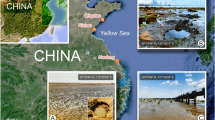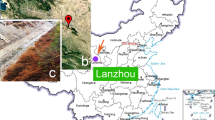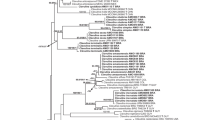Summary
The morphology and biology of the colpodid ciliate Kuehneltiella terricola gen. nov., sp. nov. has been investigated using living organisms, various silver impregnation methods, and scanning electron microscopy. The new species has been isolated in soil from central Australia and might be endemic to this continent. The new genus Kuehneltiella differs from its nearest relative, Bresslaua, in having a right oral polykinetid composed of a single row of dikinetids. A reinvestigation of Lynn's slides of Bresslaua insidiatrix showed that, contrary to the statement of Lynn (1979), this species has a typic colpodid right oral polykinetid, i.e., composed of many short, disordered kineties. A brief review of the literature suggests that simple, single-rowed, right oral polykinetids are apomorphic in the colpodids s. str. Further, this special character has obviously evolved independently several times within the class Colpodea and even within the colpodids s. str. An illustrated key to the genera of the family Colpodidae is provided.
Similar content being viewed by others
References
Ammermann D, Schlegel M (1983) Characterization of two sibling species of the genus Stylonychia (Ciliata, Hypotricha): S. mytilus Ehrenberg, 1838 and S. lemnae n. sp. I. Morphology and reproductive behavior. J Protozool 30:290–294
Augustin H, Foissner W, Adam H (1984) An improved pyridinated silver carbonate method which needs few specimens and yields permanent slides of impregnated ciliates (Protozoa, Ciliophora). Mikroskopie 41:134–137
Blatterer H, Foissner W (1988) Beitrag zur terricolen Ciliatenfauna (Protozoa: Ciliophora) Australiens. Stapfia (Linz) 17:1–84
Corliss JO (1953) Silver impregnation of ciliated protozoa by the Chatton-Lwoff technic. Stain Technol 28:97–100
Foissner W (1985) Klassifikation und Phylogenie der Colpodea (Protozoa: Ciliophora). Arch Protistenkd 129:239–290
Foissner W (1987a) Soil protozoa: fundamental problems, ecological significance, adaptations in ciliates and testaceans, bioindicators, and guide to the literature. Progr Protistol 2:69–212
Foissner W (1987b) Neue und wenig bekannte hypotriche und colpodide Ciliaten (Protozoa: Ciliophora) aus Böden und Moosen. Zool Beitr 31:187–282
Frith HJ (1979) Wildlife Conservation, revised edn. Angus & Robertson, London Sydney Melbourne Singapore Manila
Kahl A (1931) Urtiere oder Protozoa. 1. Wimpertiere oder Ciliata (Infusoria). 2. Holotricha außer den im 1. Teil behandelten Prostomata. Tierwelt Dtl 21:181–398
Köhler W, Schachtel G, Voleske P (1984) Biometrie. Einführung in die Statistik für Biologen und Agrarwissenschaftler. Springer, Berlin Heidelberg New York Tokyo
Lynn DH (1979) Fine structural specializations and evolution of carnivory in Bresslaua (Ciliophora: Colpodida). Trans Am Microsc Soc 98:353–368
Müller OF (1773) Vermium Terrestrium et Fluviatilium, seu Animalium Infusorium, Helminthicorum et Testaceorum, non Marinorum, Succincta Historia. Heineck et Faber, Havniae et Lipsiae
Author information
Authors and Affiliations
Additional information
Dedicated to the late Prof. Dr. W. Kühnelt
Rights and permissions
About this article
Cite this article
Foissner, W. Kuehneltiella terricola gen. nov., sp. nov. — a carnivorous ciliate (Protozoa, Ciliophora) from a sandy soil in Australia. Biol Fertil Soils 9, 110–118 (1990). https://doi.org/10.1007/BF00335792
Received:
Issue Date:
DOI: https://doi.org/10.1007/BF00335792




